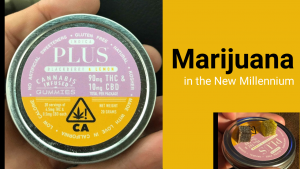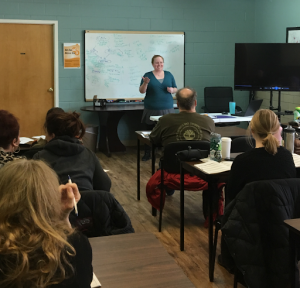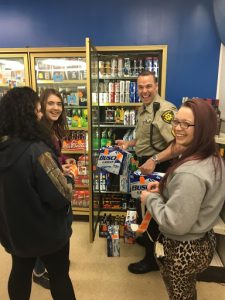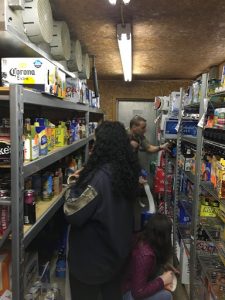Substance use disorder prevention works – and no matter who you are -there’s something you can do to help.
Here’s what we’re working on and how you can get involved:
Curious about your drinking patterns? Take this quiz.
Over 1 million people have taken the the quick quiz at AlcoholScreening.org, to learn about their drinking patterns and receive personalized feedback. You’ll find out whether your alcohol consumption is likely to be within safe limits, or if it may be harmful to your health, either now or in the future. It’s confidential and only takes a few minutes. Check it out!
Safe Storage of Cannabis, Alcohol, and other Drugs
Download our rack card on Preventing Exposure to Alcohol, Cannabis, and Prescription Drugs.
Safe Storage and Disposal of Cannabis, Alcohol and other Drugs
Safely Store:
- Secure adult-use substances and medications in a place where kids can’t access them. Lock them up if possible. This includes cannabis.
- Remember, how you store medicines should change as your children get older. What works to protect a toddler from accidental ingestion may not work to protect a curious teenager who might actually be looking for it.
How To Lock Your Meds
Keep Track:
- Count your medications, and keep an inventory sheet.
- Let your kids know that you are keeping track.
- Download a tracking sheet
Take Back:
- Get rid of any unused medications.
- Many local police departments have drop boxes, and also hold take-back events twice a year.
Preventing Opioid Overdoses
Naloxone/Narcan Distribution
The Maine Naloxone Distribution Initiative makes free Narcan distribution possible. If you are in Penobscot, Piscataquis, Aroostook, Hancock, or Washington Counties and are interested in learning more, contact Denise Smith denise.smith@bangormaine.gov .
If you are a medical or fire emergency response agency seeking Narcan to leave behind after a call, please follow the instructions in this link: https://umaine.qualtrics.com/jfe/form/SV_eKGWKgLV5SZzW1U
Law enforcement agencies seeking Narcan should contact the office of Brian MacMaster, Chief of Investigations by emailing Amy.m.bailey@maine.gov
Overdose Prevention Education and Technical Assistance
Bangor Public Health & Community Services offers virtual or in-person training about opioid overdose prevention, how to recognize and react to an overdose, risk factors for overdose, and how to use Narcan in the event of an overdose. We have resources to help with policy development and technical assistance.
All services are free and available in Penobscot and Piscataquis Counties.
If you have questions or would like us to present at your workplace, community forum, or school, please contact Denise Smith at denise.smith@bangormaine.gov for more information.
Opioid Use and Overdose
Whether you use drugs, love someone who does, or just care about the people in your community, it’s important to be prepared if you encounter someone who is overdosing.
Different drugs can impact overdose response. There are two drugs in the drug supply right now that are particularly harmful and are accompanied by specific signs.
Fentanyl is a powerful opioid 100x more powerful than morphine and 50x more powerful than heroin. It has virtually replaced heroin in the drug supply. Fentanyl overdoses typically happen very quickly, within moments of use.
- One effect of fentanyl is that it can cause rigid muscles. The muscles around the chest may seize up and get hard, resulting in “wooden chest.” Jaw muscles can also tense and lock up.
- To experience the effects of fentanyl, it must be absorbed through a mucus membrane or injected into the body. Illicit fentanyl does not absorb well through the skin. Despite messages that may be in the media, touch overdoses from fentanyl have been disproven. Read more here: https://filtermag.org/fentanyl-touch-inhalation-overdose-police-san-diego/
Xylazine is an animal tranquilizer not meant for human consumption. It is being added to fentanyl.
- Xylazine causes extreme sedation which may impact a person’s ability to respond after naloxone.
- It causes severe skin wounds whether smoked, snorted or injected and wounds can appear anywhere on the body.
Both Fentanyl and Xylazine can impact overdose response. See how in overdose steps below.
What is Naloxone?
Naloxone/Narcan is an over the counter medication that can reverse the effects of an opioid overdose. It is safe and easy to use. It is also legal to both carry and to use on a person you believe could be experiencing an overdose.
Naloxone and Narcan are often used interchangeably to describe the overdose reversal medication. Both are correct terms. Naloxone is the generic term for the medicine and Narcan is the commercial name for nasal naloxone.
Naloxone works by blocking the opioids from the brain receptors for 30-90 minutes. 30-90 minutes is how long it will work before it wears off. After that time, the person is in danger of overdosing again.
It is 100% safe to use. You can’t hurt someone who isn’t overdosing if you give them naloxone and a person cannot overdose on naloxone. You can give naloxone to children, people who are pregnant or nursing—even pets!
If you suspect someone is using drugs and may have overdosed, give them naloxone even if you don’t know what drugs they may have used. Some people may be exclusively using stimulant drugs like methamphetamines or cocaine. Sometimes people don’t know opioids have been mixed in their drugs. In fact, more and more often, drug checking tests are finding opioids in various amounts mixed with stimulants. If you suspect an overdose, always give naloxone. It can only help.
These are the signs of overdose:
- Blue/purple fingernails or lips
- Unresponsive to voice or touch
- Pinpoint pupils
- Slow or irregular heartbeat
- Irregular breathing, gurgling, or wheezing
If you suspect someone is experiencing an overdose, follow these emergency steps:
Try to wake the person.
- Shake their shoulders, shout their name. Rub your knuckles on their sternum or upper lip.
- Xylazine can create deep sedation. The person may be unconscious but not overdosing. Look for the signs of overdose, but also be sure to listen and feel for heartbeat or breath.
Call 911.
- An opioid overdose needs immediate medical attention.
- Tell the 911 operator “someone is unresponsive and not breathing.”
- Provide address and/or description of your location.
Give naloxone if you have it. If you don’t have naloxone, you can still help. Move on to the next step and start rescue breathing.
- Give naloxone even if you don’t know what drugs the person took or if the person is even overdosing. Sometimes people don’t realize their drugs have opioids mixed in them. Always give naloxone if you have it. It can only help.
- Nasal naloxone comes in box with 2 nasal devices, each pre-dosed and ready to use. Place the nasal device into the nasal cavity and push the plunger. The medicine will release and absorb into the nasal cavity.
Support breathing. Provide rescue breathes. What the person needs most in the moment is oxygen.
- Tilt head back, pinch the nose and give one breath every 5-6 seconds.
- Fentanyl overdoses can cause rigid muscles or locked jaw. Should this happen, give breaths through nose.
- As the naloxone absorbs and moves though the person’s body, their muscles and jaw will loosen.
- If possible, use Personal Protective Equipment (PPE), like a mouthguard, as a barrier. If traditional PPE is not available, items such as a t-shirt, face mask, or plastic bag can serve the same purpose.
Assess if the naloxone is working.
- Naloxone takes 2-3 minutes to work. Giving more won’t make it work faster. Give one dose and wait 2-3 minutes.
- If the person is still non-responsive after 2-3 minutes, check symptoms. Is their skin returning to normal? Can you feel a heartbeat or their breath?
- The sedative effects of Xylazine may stop the person from verbally responding.
- If there are still no signs of life, give a second dose of naloxone and continue rescue breathing.
If possible:
- Stay with the person to monitor them and keep them warm.
- If you must leave the person for any reason, put them on their side in the “recovery position.” This will help prevent them from choking.
- The effects of opioids last longer than naloxone. Naloxone only works for 30-90 minutes. Watch for returning signs of overdose for at least 4 hours from the last dose of naloxone.
Using alone is the #1 risk factor among people who use drugs. Most fatal overdoses are accidental and most victims have already died before they are found or can be taken to the hospital. The Never Use Alone hotline can help keep loved ones safe. Someone stays on the phone with the drug user and will call for help if needed.
Safe Use Hotline 1-800-484-3731 http://neverusealone.com
Our friends at Maine Access Points created a brief video to explain the signs of overdose and how to save a life. Please watch and share it widely:
You can also download the Overdose Prevention Rack Card.
Youth Resources
Could a Friend Use Your Help?
When you talk, your friends will listen – even if you’ve tried drugs or alcohol yourself.
You may be worried that your friend will be mad at you – but if you really think that he/she/they needs help, you need to say something.
These tips from Above the Influence can help you get ready for the conversation.
If You Need Help
There are resources available, and people ready to help. The following are a really good starting place:
- Text ABOVE to 741-741 for 24/7, anonymous, free crisis counseling via the Crisis Text Line.
- Connect with the Brewer Chapter of Young People in Recovery (YPR).
- YPR envisions a world where everyone can access the necessary resources to recover from substance use disorder.
- They offer monthly meetings and ways to connect and get involved.
- YPR’s mission is to provide the training and networks all individuals, families, and communities need to recover and maximize their full potential.
Be Informed
Get the latest information on how drugs and alcohol affect the brain and body from NIDA for Teens.
Dealing with Media
There’s no shortage of youth-targeted advertising by the alcohol, marijuana, and tobacco/vaping industries.These companies are looking to develop lifelong customers and “replacement smokers”. Many are marketing their products as healthy and a good alternative to other choices, but often that’s not the real story.
These tips from The Media Literacy Project can help you critically evaluate the messages you’re receiving:
- Recognize what the media maker wants you to believe or do
- Recognize bias, spin, misinformation, and lies
- Discover the parts of the story that are not being told
- Evaluate media messages based on your own experiences, skills, beliefs, and values.
- Advocate for media justice
Get Involved
If you’re interested in working with us on Project Sticker Shock, youth advocacy or other opportunities for substance use prevention or leadership development, please contact us.
Parents/Family Resources
All youth are at risk of substance use, and what you do matters! Parents are the #1 influence of whether or not their children choose to use substances.
For more prevention information, check out SAMHSA’s Talk They Hear You Campaign to help you start—and keep up—the conversation about drinking alcohol and using other drugs.
If you’re worried that your child may be drinking alcohol or using substances, visit Partnership for Drug-Free Kids Parent Toolkit.
School Resources
We offer several services, free of charge, to all schools in Penobscot County.
Classroom Education for Students (Prime for Life©)
This is not a “one and done” special assembly, but a series of classroom sessions designed to help students identify their own risk for substance use disorder, while also defining low risk and high risk choices with a certified Prime For Life© instructor. Each student receives a workbook that is also provided free of charge. Contact us to schedule Prime for Life.
Training for School Faculty/Staff and Parent Education
Workshops on a variety of topics such as marijuana trends, e-vapor devices, and Maine Integrated Youth Health Survey data presentations. We also collaborate with law enforcement agencies to offer drug/drug paraphernalia identification training. Contact us to schedule a workshop.

One of our presentations available for adult audiences.
Technical Assistance with School Policies
Schools should take a look at their substance use policy every two years, and when new problems arise. A comprehensive policy that fits your school’s values is a powerful tool in preventing student substance use problems. Contact us to request policy support.
Brochures, Posters and Fact Sheets
Bangor Public Health provides a variety of prevention-focused material at no-cost to schools. You can request materials for your school building and/or to send home to families. Contact us to request print materials.
Businesses/Employees Resources
Alcohol Server/Seller Trainings
If you sell or serve alcohol, we offer free server/seller trainings. You’ll gain a professional certification valid for 3 years as well as new tools and strategies. We offer classes throughout Penobscot County and are able to come to your establishment (for larger groups).


Alcohol Sales Policies
Sales policies help liquor licensees stay compliant with Maine liquor laws and assist employees with the responsible sale of alcohol. Maine offer a free, online policy generator for businesses. Contact Brianna Bryant for policy assistance.
Participate in Sticker Shock
If you sell alcohol in a retail store, contact Brianna Bryant to implement Project Sticker Shock. The goal to reach people over age 21 who legally purchase alcohol and provide it to a minor. The project consists of stickers being adhered to multi-packs of alcoholic beverages (beer, alco-pops, etc) in stores. These orange stickers explain the legal penalties for providing alcohol to minors. A group of youth accompanied by adult chaperones – including a law enforcement officer, visits stores to place the stickers. This is a great thing to do during high-risk drinking times for youth such as prom or graduation season.


Drug-Free Workplace Policies
Bangor Public Health & Community Services can help your work site establish a drug-free workplace policy or update your current policy. Contact Brianna Bryant for policy assistance.
Brochures, Posters and Fact Sheets
Bangor Public Health provides a variety of prevention-focused material at no-cost to employers. Contact Brianna Bryant to request print materials.
Contact Us
Robin Carr
Phone: 207-992-4465
Email: robin.carr@bangormaine.gov
Fax: 207-945-3348
